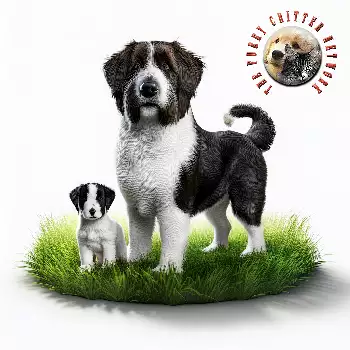The Stabijhoun, also spelled Stabyhoun, carries several names that reflect its Frisian heritage and versatile nature. In its native Netherlands, this breed is affectionately known as the Stabij or simply Staby, nicknames that have followed the breed as it has spread to other countries. The formal Dutch name Stabijhoun is derived from the Frisian phrase sta mij bij meaning stand by me, combined with houn, which is the Frisian word for dog pronounced as hoon. This etymology perfectly captures the breed's essential character as a loyal, devoted companion that remains steadfastly by its owner's side through all circumstances. The name reflects centuries of partnership between these dogs and the Frisian farmers who depended upon them for countless tasks.
The breed is also referred to as the Frisian Pointer, acknowledging both its geographic origins in the Friesland province of the Netherlands and its primary function as a pointing gun dog. Some breed enthusiasts and registries use the anglicized spelling Stabyhoun, which has become the standard in English-speaking countries and is the spelling preferred by the United Kennel Club. The FCI officially recognizes the breed as the Stabijhoun under Standard Number 222, while accepting Stabyhoun as a valid alternate spelling. This variation in spelling can sometimes cause confusion among newcomers to the breed, but both spellings refer to the same rare and wonderful Dutch breed that has captured hearts across the globe.
Within the Netherlands, the Stabijhoun is considered a national treasure, one of the few remaining authentic Dutch breeds that has maintained its original form and function for centuries. The Dutch take great pride in this heritage, viewing the breed as an important piece of their cultural history that connects modern generations to their agricultural past. The breed is protected through careful breeding programs overseen by the Nederlandse Vereniging voor Stabij- en Wetterhounen (NVSW), the Dutch parent club established in 1947. This organization maintains strict breeding standards and approves all matings worldwide to preserve the genetic health and breed characteristics of this rare dog, ensuring that future generations will continue to enjoy these remarkable companions.
The breed's rarity outside the Netherlands has led to a small but dedicated international following of passionate enthusiasts. Breed clubs have formed in the United Kingdom, Scandinavia, and North America to promote and protect the Stabijhoun and educate potential owners about this exceptional breed. The UK Stabyhoun and Wetterhoun Association and the Ameri-Can Stabyhoun Association work closely with the Dutch parent club to ensure that breeding practices abroad maintain the same high standards that have preserved the breed for generations. Despite being relatively unknown to the general public, the Stabijhoun has earned recognition from major kennel organizations worldwide and continues to gain admirers who discover this versatile, intelligent, and devoted companion through word of mouth and dedicated breed promotion efforts.

